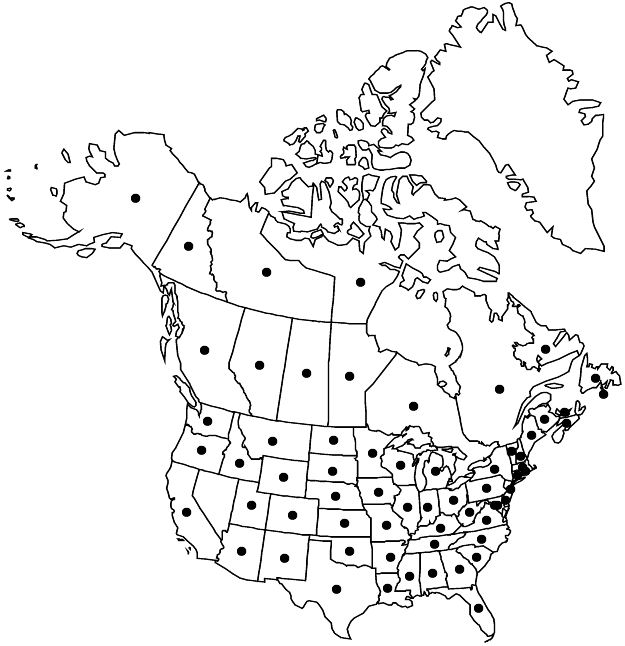Difference between revisions of "Fragaria virginiana"
Gard. Dict. ed. 8, Fragaria no. 2. 1768.
RevisionBot (talk | contribs) m (Bot: Adding category Revision Pending) |
imported>Volume Importer |
||
| Line 78: | Line 78: | ||
|publication year=1768 | |publication year=1768 | ||
|special status=Endemic;Illustrated | |special status=Endemic;Illustrated | ||
| − | |source xml=https:// | + | |source xml=https://bitbucket.org/aafc-mbb/fna-data-curation/src/2e0870ddd59836b60bcf96646a41e87ea5a5943a/coarse_grained_fna_xml/V9/V9_444.xml |
|subfamily=Rosaceae subfam. Rosoideae | |subfamily=Rosaceae subfam. Rosoideae | ||
|tribe=Rosaceae tribe Potentilleae | |tribe=Rosaceae tribe Potentilleae | ||
| Line 85: | Line 85: | ||
}}<!-- | }}<!-- | ||
| − | --> | + | -->[[Category:Treatment]][[Category:Fragaria]] |
| − | |||
| − | [[Category:Treatment]] | ||
| − | [[Category:Fragaria | ||
| − | |||
Revision as of 22:56, 5 November 2020
Plants hermaphroditic or unisexual. Leaves usually green to bluish green, sometimes bright green, sometimes glaucous, thin but ± stout (slightly thicker than F. vesca), sometimes slightly leathery, not reticulately veined abaxially, terminal tooth of terminal leaflet usually shorter (often narrower) than adjacent teeth. Flowers bisexual or unisexual (plants dioecious, gynodioecious, or trioecious); hypanthium 9.5–27 mm diam.; petals 5, obovate to widely obovate, margins overlapping or distinct. Achenes usually deeply embedded, rarely in pits or ± superficial, yellowish green to reddish brown, 1.2–1.8 mm; bractlets clasping, spreading, or ± reflexed, sepals clasping; torus usually not easily separate from hypanthium.
Distribution

Alta., B.C., Man., N.B., N.S., N.W.T., Nfld. and Labr. (Nfld.), Nunavut, Ont., P.E.I., Que., Sask., Yukon, Ala., Alaska, Ariz., Ark., Calif., Colo., Conn., D.C., Del., Fla., Ga., Idaho, Ill., Ind., Iowa, Kans., Ky., La., Maine, Mass., Md., Mich., Minn., Miss., Mo., Mont., N.C., N.Dak., N.H., N.J., N.Mex., N.Y., Nebr., Ohio, Okla., Oreg., Pa., R.I., S.C., S.Dak., Tenn., Tex., Utah, Va., Vt., W.Va., Wash., Wis., Wyo.
Discussion
Subspecies 4 (4 in the flora).
It seems inappropriate to the author to follow the proposal of K. E. Hokanson et al. (2006) to reclassify the subspecies of Fragaria virginiana to forms.
Selected References
None.
Lower Taxa
Key
| 1 | Stolons, petioles, peduncles, and pedicels usually appressed ascending-hairy, sometimes almost glabrous. | Fragaria virginiana subsp. glauca |
| 1 | Petioles spreading-hairy; stolons, peduncles, and pedicels usually spreading- or appressed ascending-hairy, sometimes glabrous | > 2 |
| 2 | Stolons and peduncles spreading- or appressed-ascending-hairy, proximally often spreading-hairy, distally ascending-hairy or glabrous; pedicels appressed-hairy or glabrous. | Fragaria virginiana subsp. virginiana |
| 2 | Stolons, peduncles, and pedicels spreading-hairy throughout | > 3 |
| 3 | Leaflet blades green to bright green, not glaucous, terminal leaflets slightly rhombic to broadly elliptic, margins sharply serrate throughout; bractlets slightly clasping or spreading to ± reflexed; e, sc United States. | Fragaria virginiana subsp. grayana |
| 3 | Leaflet blades usually bluish green, slightly glaucous, sometimes dull, terminal leaflets ovate-obovate to cuneate or truncate, margins serrate or crenate only in distal 1/3; bractlets clasping or slightly spreading; w North America. | Fragaria virginiana subsp. platypetala |